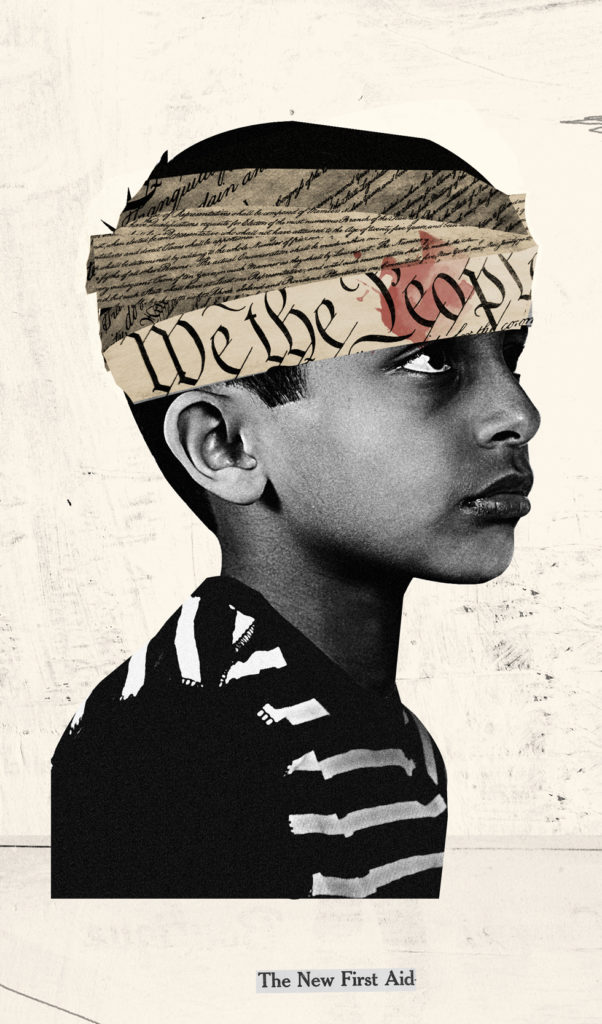Beyond Health: The Interplay of Law and Medicine
Among the hidden gems in the law school curriculum is Medical-Legal Issues in Children’s Health, a course that embraced an interdisciplinary approach to teaching before it became a highlight of the university’s most recent capital campaign. Co-taught by Dr. Dana Weintraub, clinical assistant professor of pediatrics at Lucile Packard Children’s Hospital at Stanford, and Brooke Heymach, lecturer in law and supervising attorney for the Legal Aid Society of San Mateo County, the seminar brings together graduate students from multiple disciplines—particularly law and medicine—to focus on the holistic provision of medical and legal services to children living in poverty.
The class grew out of Weintraub’s work with the Peninsula Family Advocacy Program (FAP), an initiative she helped launch in 2004. FAP is a collaboration between the Legal Aid Society of San Mateo County, Lucile Packard Children’s Hospital, Ravenswood Family Health Center, and San Mateo Medical Center’s prenatal clinics. The program trains health care providers about legal issues that affect children and family health, provides free on-site legal services to patient families, and promotes interdisciplinary policy work.
The class, which is cross-listed at the medical school, introduces
students to this partnership model of legal-health care through a series of lectures on both legal and medical topics including domestic violence,
immigration, employment law, obesity, public benefits, housing, disability, and more—as well as through service learning opportunities and a policy project.

For the service learning opportunities, Heymach chooses a case that a medical provider has referred to FAP. Then, after a preliminary workup and with the patient/client’s permission, she presents the case to the class. She then guides the class through legal issue-spotting and assigns students to work on different legal issues.
“Some students actually work with the families and almost all of the cases benefit from having a medical partner involved,” Heymach explains. Students report on these cases during the second half of each class meeting and brainstorm about possible courses of action.
First-year law student Kimberly Lovett, JD ’15, who is also a physician, brings a unique perspective to the class, having seen the limitations of the medical system.
“Although health and wellness are major priorities for every single person, it’s apparent that the medical system alone can’t achieve society’s health and wellness goals,” she says. But until enrolling in this class, Lovett, who hopes to practice both law and medicine when she graduates, didn’t realize the role that law might play in meeting those objectives. “This class highlights the various social determinants, like poor housing, that significantly impact the health and wellness of children and offers an important first glimpse of how the legal and medical systems can come together to help close health disparity gaps.”
A key lesson from the class is how future lawyers and doctors can interact. In one recent case, students worked with a disabled child who had been denied Social Security benefits. “The medical students gave a background of the disability and how it could impact the child, while the law students researched the relevant Social Security guidelines that governed the decision to grant or deny benefits,” says Heymach. The students then drafted a letter for the physician to file in support of the family’s Request for Reconsideration, which ultimately was granted.
The policy project is a quarter-long class effort, selected by class members and focused on a local- or state-level medical-legal policy issue. One recent project grew out of the increasing number of patients/clients who reported problems with housing habitability. “We theorized that the different code inspection practices in local jurisdictions affected whether tenants would have a good result with the landlord making repairs,” says Heymach. The two groups of professional students then divided the research. “The medical students looked at the health effects of poor housing and compiled a literature review substantiating the importance of ‘healthy housing,’ while the law students researched local code inspection practices by interviewing code inspectors,” Weintraub explains. That research laid the groundwork for what eventually became a white paper, funded by the California Department of Public Health, comparing code inspection practices over four Bay Area counties and suggesting reforms.
Second-year law student Cesar De La Vega, JD ’14, spent last summer working with The City Project, where he focused on improving the health of low-income communities in Los Angeles County. He plans to return to Los Angeles and continue this work and hopes to use the lessons learned in this class, especially at the policy implementation level.
“There are so many issues where law overlaps with medicine,” he says. “For example, zoning and land use laws affect kids’ access to parks, which in turn affects their health.” De La Vega looks forward to gaining some practical experience in cross-professional collaboration, especially through the class policy project. “After all, in the real world we all need to work together.”
The results of this coordinated effort have been astounding, according to Heymach.
“Without this integrated system, many low-income families would have no idea that they had access to legal resources and, if they sought help at all, it wouldn’t be until a full-blown crisis had developed. By intervening legally at an early stage, we can positively affect both the family’s legal and health-related outcomes long before the situation reaches the boiling point.” SL
1 Response to “Beyond Health: The Interplay of Law and Medicine”
Comments are closed.

Legal Help Today
There was always a big mess with the Medical-Law issues.
And – yes.. I agree with this one:
““Without this integrated system, many low-income families would have no idea that they had access to legal resources and, if they sought help at all, it wouldn’t be until a full-blown crisis had developed. By intervening legally at an early stage, we can positively affect both the family’s legal and health-related outcomes long before the situation reaches the boiling point.””
There are a lot of free or low-cost services provided by attorneys, but people just don’t know for them. Unfortunately.
Regards!